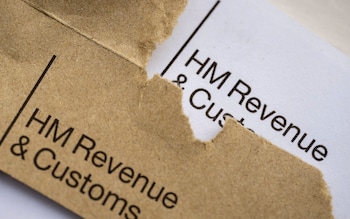“The plan is working – inflation is falling faster than expected.” So said Chancellor Jeremy Hunt on Wednesday, just after the release of the UK’s latest price data.
The consumer price index rose 3.2pc during the year to March, reported the Office for National Statistics – which was indeed down from 3.4pc the previous month. And headline inflation is, of course, now far lower than the peak of October 2022, when it hit 11.1pc – a 40-year high.
But whatever the Chancellor says, the March data showed UK inflation falling slower, not faster than expected. That’s why, soon after the news broke, City investors altered their forecasts of when, and by how much, the Bank of England’s Monetary Policy Committee (MPC) might finally start cutting interest rates – currently at 5.25pc, a 16-year high.
Prior to Wednesday’s smaller-than-expected inflation drop, financial markets were pricing-in a first cut in rates by July, with the MPC going on to lower rates three times in total before the end of 2024.
Such expectations of a sharp upcoming fall in borrowing costs have been at the heart of recent improvements in business and consumer sentiment, helping the UK to escape recession. The prospect of multiple rate cuts over the summer and early autumn has also been a major reason why Downing Street has so far opted to delay the general election until October – in the hope that voters would benefit from some kind of economic “feel-good factor”.
But news that inflation is still well above 3pc provoked a significant shift in the weight of money across UK bond markets. Yield differentials soon suggested, and at the time of writing continue to suggest, that with inflation still far in excess of the Bank’s 2pc target, the MPC will implement at most one rate cut during 2024 – and that won’t happen until November.
This big change in the interest rate outlook could prove to be a dampener on the recent uptick in housing market activity and will be a blow to all borrowers – household and corporate – desperate for lower borrowing costs. Should there end up being only one rate cut this year, that would also further undermine the Tories’ ability to challenge Labour’s huge poll lead, harming their election chances even more.
Part of the reason inflation came down last month was because the rise in UK food prices has been steadily easing. Having hit 19.2pc last spring, food price inflation has since fallen from 7pc in January to 4pc in March – helping bring headline inflation down.
At the same time though, the overall inflation drop wasn’t as steep as expected, largely because utility and motor fuel prices, far from falling, have lately been going up.
The ONS fine print shows that household utility prices – including gas, water and electricity – were 1.6pc lower last month than in March 2023. Yet between February and March, those same household bills rose 0.2pc on average – so the drop in annual utility inflation hasn’t just slowed but has lately started to reverse.
The same trend can be seen when it comes to motor fuels – only more so. The combined average price of petrol and diesel fell 6.5pc during the 12 months to February but just 3.7pc during the year to March, with the drop in annual motor fuel inflation slowing.
But again, more recently, the price of unleaded petrol has nudged up, from 144.8 pence per litre in February to 146.8 pence last month. Since this latest ONS inflation data was published, in fact, the AA has warned that drivers now face paying more than 150 pence per litre for petrol – no less than £82.50 to fill the tank of a typical 55-litre car. And already, says the AA, diesel prices now average 157.7 pence per litre, up almost 2pc since mid-March.
The AA has rightly suggested that some petrol retailers may be inflating prices unfairly. The Competition and Markets Authority has also lately restated its concern about recent increases in petrol station profit margins.
What really drives petrol and diesel prices, though – while having a massive impact on inflation in the UK and across the world – is the price of oil. A fortnight ago, even before the horrifying exchange of missile strikes between Israel and Iran, crude was trading above $90 (£72.73), up from $73 in mid-January – a 25pc surge in just three months.
That reflected not only ongoing geopolitical tensions since Hamas attacked Israel last October, but also the efforts of the Opec oil exporters’ cartel. Acting together with non-member Russia, an increasingly powerful Opec+ grouping is currently imposing production restrictions of around two million barrels per day, some 2pc of global oil demand.
Since last weekend, though, the geopolitical outlook has, to say the least, deteriorated. Not only is the US reimposing sanctions on Venezuela, but Western nations are talking about tougher sanctions on Iran.
Following Iran’s strike on Israel last weekend, fears that violence could spread across the Middle East have sparked warnings oil could spike to $120 a barrel. That would kill any chance of rate cuts soon. The next move in UK rates could even be upwards.
There’s a strong chance, though, that both Israel and Iran, having made their respective points – including Israel’s counter-strike – will now heed international pressure and show restraint.
Will Iran follow through on its threats to close the two-mile-wide Strait of Hormuz, the shipping gateway out of the Persian Gulf, the route taken by a quarter of global oil flows and a third of all liquified natural gas (LNG)? Energy prices would then rocket. I don’t think that will happen.
Consider that China, as well as being Iran’s main trading partner, has replaced the US as the world’s largest oil importer – with the Gulf accounting for half those imports. Beijing now imports more crude via the Strait of Hormuz each day than the US and EU combined.
Tory ministers are desperate for growth-boosting rate cuts – which won’t happen if Iran upends global energy markets, as it could, by closing Hormuz.
But Tehran won’t do that – because Beijing won’t let it.
Disclaimer: The copyright of this article belongs to the original author. Reposting this article is solely for the purpose of information dissemination and does not constitute any investment advice. If there is any infringement, please contact us immediately. We will make corrections or deletions as necessary. Thank you.



